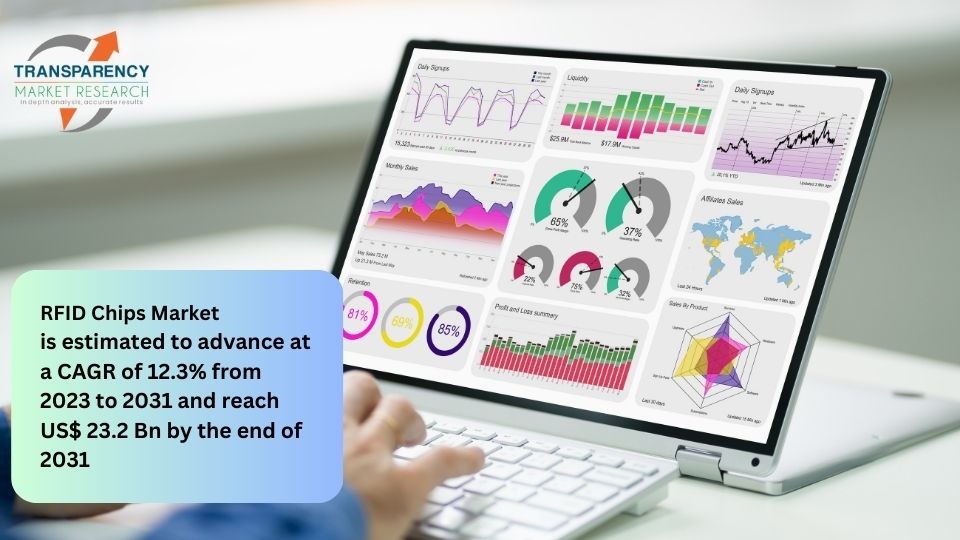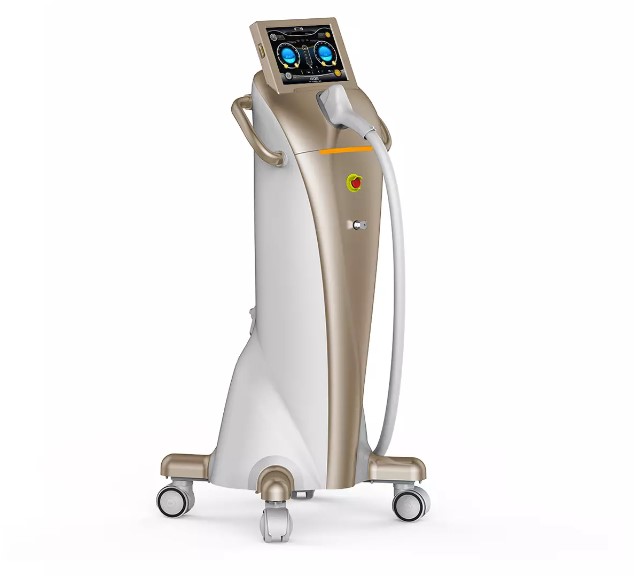The RFID chips market, valued at $8.1 billion in 2022, is on a fast track to reaching $23.2 billion by 2031, advancing at a robust CAGR of 12.3%. This growth is driven by the widespread adoption of Radio-Frequency Identification (RFID) technology across various sectors, including retail, e-commerce, pharmaceuticals, and logistics.
RFID Revolution: Transforming Industries with Cutting-Edge Technology
RFID technology is transforming how businesses track and manage assets, inventory, and even personnel. Its effectiveness in asset management, inventory control, and supply chain optimization is leading to a significant surge in adoption. Key trends fueling this growth include:
- Miniaturization and Cost Reduction: Advances in technology and the trend towards smaller, more affordable RFID solutions are expanding their applicability. This evolution is making RFID chips suitable for a wider range of applications, from everyday retail to complex logistics operations.
- Integration with IoT and Data Analytics: The integration of RFID with the Internet of Things (IoT) and advancements in data analytics are enhancing RFID capabilities. These developments are improving asset visibility, optimizing transportation routes, reducing waste, and supporting global sustainability goals.
RFID Chips: The Backbone of Modern Tracking Systems
RFID chips use radio frequency to locate, identify, and track objects and people, offering several advantages over traditional barcodes. Unlike barcodes, RFID tags can store more data, withstand environmental damage, and are increasingly used to support IoT deployments. This versatility is driving the market forward.
- Automation and Efficiency: RFID chips are revolutionizing supply chain management and inventory control by automating data collection and reducing manual processes. The introduction of advanced handheld RFID readers, such as Janam Technologies’ XR2 UHF RFID Reader, is further enhancing efficiency in challenging environments.
- Enhanced Security and Anti-Counterfeiting: RFID technology is playing a crucial role in improving data security and reducing counterfeiting. Advanced security features such as encryption and authentication are making RFID a vital tool for access control and secure identification in various industries, including pharmaceuticals and luxury goods.
Market Dynamics: Passive Tags and Ultra-High Frequency (UHF) Lead the Way
- Passive Tags: The passive RFID tag segment, which held a 74.2% market share in 2022, continues to dominate due to their low cost and long lifespan. These tags are ideal for applications requiring durable, cost-effective solutions.
- Ultra-High Frequency (UHF) Tags: UHF RFID tags, operating between 860-960 MHz, are gaining traction for their ability to read multiple tags simultaneously and provide high-speed data transfer. Their integration with IoT systems for real-time monitoring is a key driver of their growing market share.
Regional Spotlight: Asia Pacific at the Forefront
Asia Pacific held a significant 39.9% share of the RFID chips market in 2022, driven by the region’s booming e-commerce sector and regulatory support for RFID technology. Countries like China and India are leading the way in implementing RFID solutions across agriculture, healthcare, and supply chain management.
Key Players and Innovations Shaping the Market
The RFID chips market is highly fragmented, with major players including Alien Technology, Avery Dennison Corporation, and Impinj, Inc. Recent innovations highlight the industry’s momentum:
- TSL’s High-Performance UHF RFID Reader Modules: Launched in October 2022, these modules simplify software integration and enhance performance with next-generation Impinj reader chips.
- Avery Dennison’s Dual-Frequency Inlays: Introduced in May 2022, these inlays offer combined NFC and RAIN RFID functionality for cost-effective item-level tagging.
- Impinj’s Advanced RFID Reader Chips: The new Impinj E710, E510, and E310 reader chips, unveiled in June 2021, set new standards for performance, integration, and energy efficiency.
As RFID technology continues to evolve, it promises to deliver greater efficiencies, security, and capabilities across industries. The RFID chips market is on an exciting trajectory, poised to become a cornerstone of modern tracking and management solutions.



